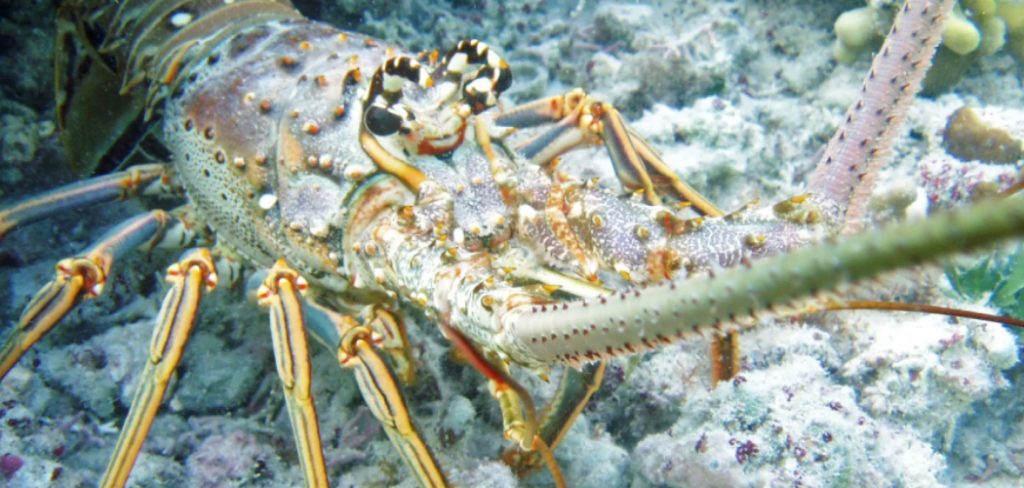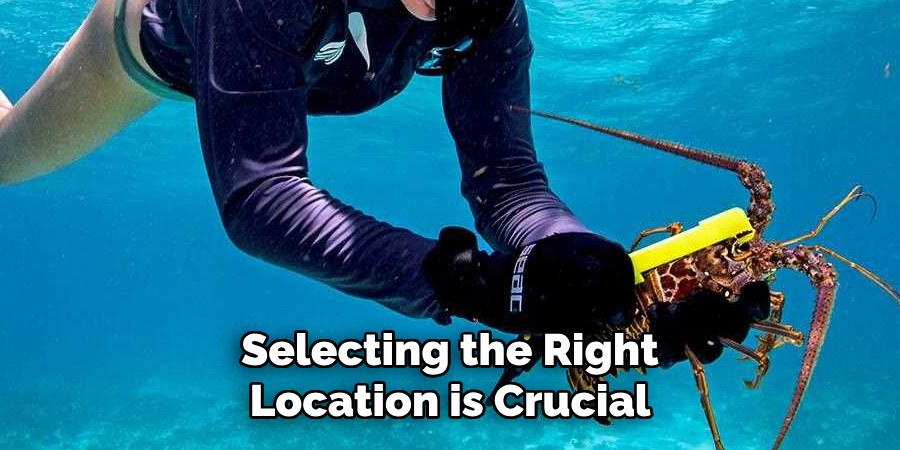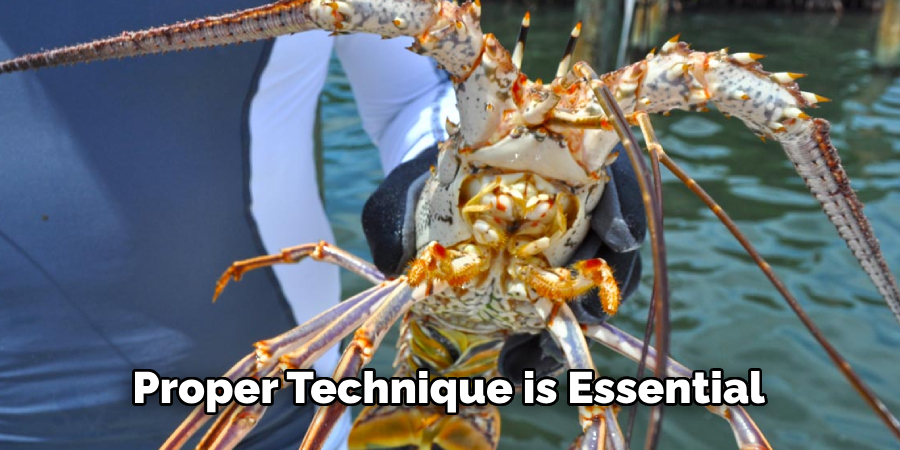Are you planning a trip to the Florida Keys and want to try your hand at lobster catching? It’s not as easy as it looks, but with some knowledge and skill, you can have a successful day on the water.
How to catch lobster in the keys is both a popular pastime and an exciting adventure for locals and visitors alike. Known for its turquoise waters and abundant marine life, the Keys offer the perfect environment to harvest these delicious crustaceans. Whether you’re a seasoned diver or a first-timer, lobster hunting requires preparation, the right gear, and knowledge of local regulations to ensure safety and sustainability.

With proper techniques and an understanding of their habitats, you can look forward to a rewarding experience and a fresh, delectable catch to enjoy.
What Will You Need?
Before heading out to catch lobster in the Keys, having the right equipment is essential. Here are some must-haves for a successful lobster hunt:
- Lobster license: To legally harvest lobster in Florida, you’ll need a recreational saltwater fishing license and a spiny lobster stamp. Both can be purchased online or at any local tackle shop.
- Diving gear: A mask, fins, snorkel, and gloves are necessary for safely maneuvering underwater and handling lobsters.
- Lobster measuring tool: According to Florida regulations, all harvested lobsters must measure larger than 3 inches from the rear of their carapace to their eye sockets.
- Lobster bag: These specialized bags are designed to hold your catch while still allowing water to flow through and keep the lobsters alive.
- Tickle stick or net: This tool is used to coax a lobster from its hiding spot without directly touching it. You can either use a tickle stick, essentially a long metal rod with prongs at the end, or a small net attached to the end of a stick.
Once you have all the necessary gear, it’s time to plan your fishing trip.
8 Easy Steps on How to Catch Lobster in the Keys
Step 1. Choose the Right Location
To increase your chances of success, selecting the right location is crucial when lobster fishing in the Keys. Look for areas with rocky crevices, coral reefs, or grassy sea beds, as these are prime habitats where lobsters often hide. Lobsters tend to dwell in small openings or holes, so scouting regions with ample underwater structure is essential.

Researching local hotspots or consulting with experienced divers can provide valuable insights into productive areas. Additionally, ensure the location you choose is open for recreational lobster fishing and adheres to state regulations, as some zones may be protected or off-limits to ensure conservation.
Step 2. Obtain the Necessary Permits
Before heading out, secure all the required permits for lobster fishing in the Keys. Florida law mandates a valid recreational saltwater fishing license and a lobster permit for individuals looking to harvest lobsters.
These permits ensure that you are fishing legally and contribute to the conservation and management of marine resources. Permits can typically be acquired online or at local licensing agents. Always have these documents accessible during your trip, as authorities may request to see them while you’re on the water.
Step 3. Gather the Right Equipment
The proper gear is crucial for a successful lobster fishing outing in the Keys. Essential equipment includes a sturdy pair of gloves to protect your hands, a tickle stick to coax lobsters out of their hiding spots, and a lobster net or snare to secure your catch. A lobster gauge is also necessary to measure each lobster and ensure it meets the legal size requirements for harvesting.
Additionally, a mask, snorkel, and fins will aid in maneuvering underwater efficiently. For nighttime excursions, a waterproof flashlight is indispensable. With the correct equipment on hand, you’ll be well-prepared to fish responsibly and effectively.
Step 4. Learn the Lobster Fishing Regulations
Before heading out, familiarize yourself with the lobster fishing regulations specific to the Florida Keys. These rules are in place to protect the lobster population and ensure sustainable fishing practices.
Key regulations include daily bag limits, seasonal restrictions, and prohibitions on harvesting egg-bearing lobsters. Be particularly mindful of the two-day sports season, which has its own set of guidelines. Violations can lead to hefty fines, so it’s essential to stay informed and compliant. Understanding and respecting these laws will help preserve the ecosystem and ensure a positive fishing experience for everyone.
Step 5. Master the Technique of Catching Lobsters
Proper technique is essential when it comes to catching lobsters. Begin by scanning coral reefs, rocky areas, and seagrass beds where lobsters are known to hide. Approach slowly and deliberately to avoid startling them, as lobsters retreat into crevices when threatened.

Using a lobster snare or tickle stick, gently coax the lobster out of its hiding spot. Be careful not to harm the lobster or damage its habitat. Once you secure the lobster, measure it immediately to ensure it meets the legal size requirements before placing it in your catch net. This technique will help you fish effectively while minimizing your impact on the underwater environment.
Step 6. Handle and Store Your Catch Properly
After successfully catching lobsters, handling and storing them appropriately is crucial to maintain their freshness and quality. Always use a well-ventilated, insulated cooler with ice packs to keep the lobsters at the ideal temperature.
Avoid overcrowding them, as this can cause stress and injury. Handle the lobsters gently to reduce the risk of damaging their shells or claws. If you plan to transport your catch, ensure compliance with local regulations regarding storage and transportation. Proper handling and storage techniques help preserve the lobsters’ quality for cooking and ensure their humane treatment.
Step 7. Clean and Prepare Your Lobsters for Cooking
Cleaning and preparing your lobsters properly before cooking them is essential. Begin by thoroughly rinsing the lobsters under cold, fresh water to remove sand, debris, or algae from their shells. This step ensures that the lobsters are clean and ready for cooking.
If your recipe requires removing parts of the lobster, such as the claws or tail, use a sharp knife or kitchen shears carefully to avoid injury. Live lobsters should be numbed by humane practices, such as placing them in the freezer for 15-20 minutes before cooking. Proper preparation enhances the dish’s flavor and ensures a safe and enjoyable cooking experience.
Step 8. Cooking Your Lobsters
Once your lobsters are cleaned and prepared, it’s time to cook them perfectly—various cooking methods based on your recipe, including boiling, steaming, or grilling. Bring a large pot of salted water to a rolling boil and carefully add the lobsters, ensuring they are fully submerged. Cook for about 8-12 minutes, depending on the size of the lobsters, until their shells turn bright red.
For steaming, place the lobsters in a steaming basket over a pot of boiling water, cover, and cook for a similar duration. Grilling requires brushing the lobsters lightly with oil and placing them shell-side down over medium heat for 8-10 minutes. Monitor the cooking process closely to prevent overcooking, as lobster meat is delicate and can become rubbery if cooked too long. Once done, serve immediately with melted butter or your favorite sauces for a delightful seafood meal.

Following these steps, you can enjoy a safe and successful lobster fishing experience in the beautiful Florida Keys.
5 Things You Should Avoid
- Ignoring Local Regulations: Failing to understand and adhere to local fishing regulations can result in hefty fines or legal trouble. Always familiarize yourself with size limits, bag limits, and the designated lobster seasons in the Florida Keys before heading out.
- Diving Without the Proper Gear: Using inadequate or unsafe equipment can lead to dangerous situations. Ensure you have the appropriate snorkeling or scuba gear, including gloves and tickle sticks, to handle lobsters safely and effectively.
- Overlooking Safety Precautions: Never underestimate the importance of safety during your lobster-catching excursion. Always have a buddy system, know the local water conditions, and watch out for potential hazards like jellyfish, sharp coral, or strong currents.
- Harvesting in Prohibited Areas: Some areas, such as sanctuaries, marked zones, or marinas, are off-limits for lobster catching to protect marine environments. Be aware of these restricted zones and avoid them at all costs to preserve the ecosystem and avoid penalties.
- Mismanaging Lobsters: Mishandling lobsters can harm the animal and put you at risk of injury from their sharp spines. When catching and holding lobsters, use proper techniques to avoid damaging their shells or hurting yourself.
By avoiding these common mistakes, you can ensure a responsible and enjoyable lobster fishing experience in the Florida Keys.

Conclusion
How to catch lobster in the Keys can be a rewarding experience for adventurous seafood enthusiasts, but it requires preparation, knowledge, and respect for the environment.
By understanding the regulations, practicing proper techniques, and prioritizing safety, you can ensure both a successful and sustainable outing. Always respect size and bag limits, stay mindful of protected areas, and carefully handle lobsters to preserve the delicate marine ecosystem.
With the right approach, you’ll enjoy the thrill of the hunt and contribute to the health and longevity of this incredible natural resource.
About the Author
Jennifer Branett is the author of Fishy Kayak and an expert in fish-related fields, with over 10 years of experience. Her work blends passion for fishing with a commitment to conservation.
Educational Background
Degree: Bachelor’s in Marine Biology
Institution: University of California, Santa Barbara
Specializations: Aquatic ecosystems, fish behavior, and sustainable practices
Professional Experience
Conservation Projects:
Collaborated with local organizations to restore aquatic habitats
Developed educational programs on sustainable fishing practices
Publications:
Authored articles for fishing magazines and environmental journals
Featured speaker at fishing expos and conservation conferences
Key Areas of Expertise
Fishing Techniques:
Kayak fishing strategies
Freshwater and saltwater fishing methods
Environmental Stewardship:
Advocacy for sustainable fishing
Promoting biodiversity in aquatic environments
Awards and Recognition
Recipient of the [Specific Award Name] for contributions to marine conservation
Recognized as a leading voice in the fishing community by [Organization/Publication Name]
Community Engagement
Workshops and Seminars:
Regularly hosts events to educate anglers on sustainable practices
Engages with youth programs to inspire the next generation of fishers
Online Presence:
Maintains an active blog sharing tips, stories, and conservation efforts
Engages with followers on social media to promote fishing ethics
Personal Interests
Enjoys kayaking in scenic locations
Passionate about photography, capturing the beauty of nature
Advocates for local conservation efforts in her community
